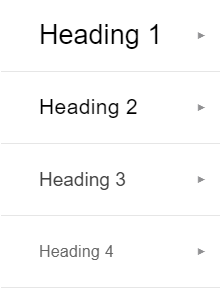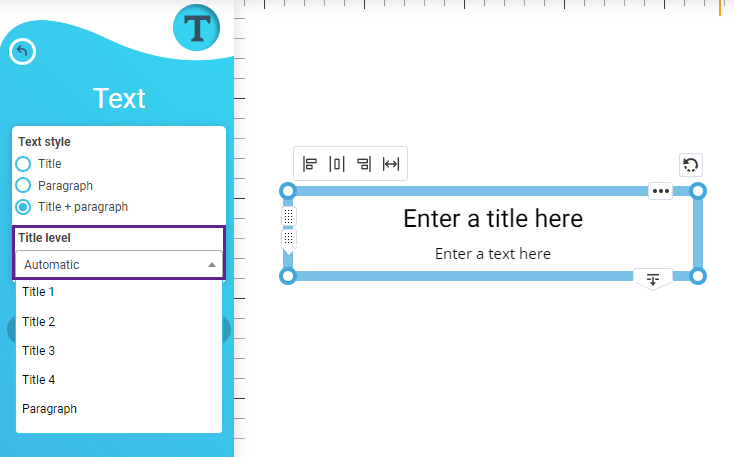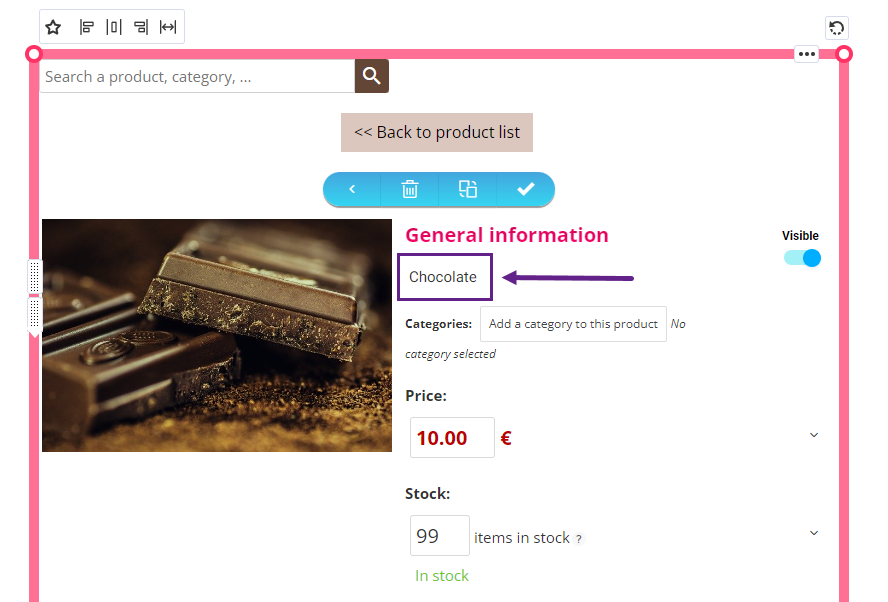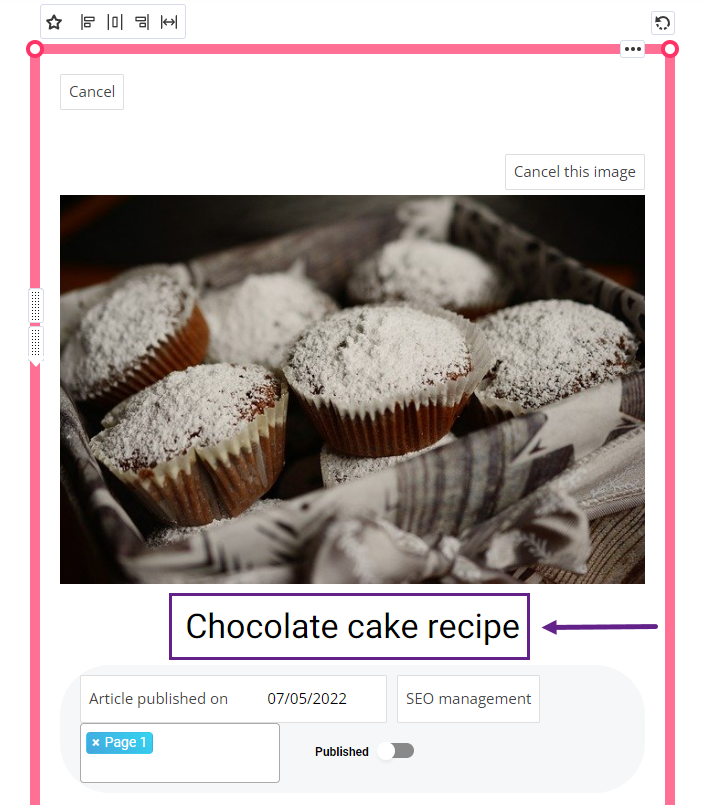Headings refer to a hierarchic level:

Your website structure is essential to rank high on search engines. Your pages should be structured in some ways, and start with a Heading 1 (H1).
Then each title should be followed by a paragraph with normal text. If you respect this rule, your text will be easier to read for your visitors and search engines will appreciate it.
💡 Don’t hesitate to add your keywords to your titles naturally, and remember that your titles should describe your content.
Heading management for the Text block
The Text block of SiteW gives you two possibilities.

Automatic heading
An algorithm defines the optimal heading for your text automatically. You have to do nothing.
Manual heading
You have the possibility to choose your heading among 4 other ones, which are presented in their HTML form:
h1: main title (heading 1)
h2, h3, h4: subtitles (heading 2, heading 3 and heading 4)
p: paragraph; that is to say, it isn’t a title
Heading management for the Store and Blog blocks
Structure the texts of your product pages and blog articles within a few clicks.
Go to the text editor toolbar > paragraph > choose your heading.

You can’t select the heading 1 (H1):


Good tips
One of the most important SEO rules consists in defining a single heading 1 for each page. You are sure to respect this constraint when you opt for automatic headings.
Google gives high priority to headings. That’s why it’s interesting to add your strategic keywords to them.
Watch out
Remember to describe your activity and page content. Avoid keyword stuffing, and add keywords parsimoniously.
Encourage your visitors to keep reading or visiting your website: don’t neglect user experience. For example, you can opt for titles that make your visitors curious or in the form of questions.





